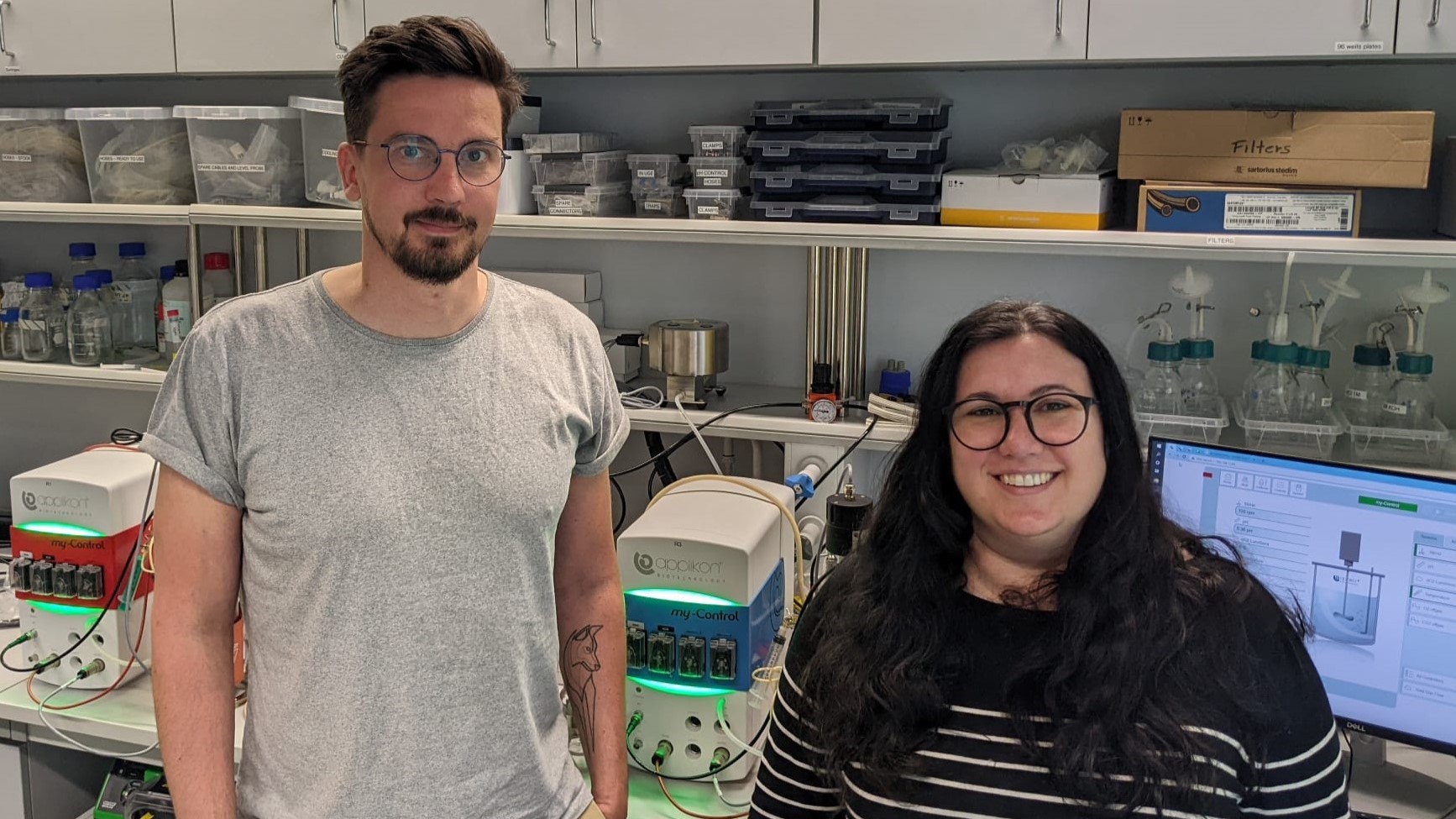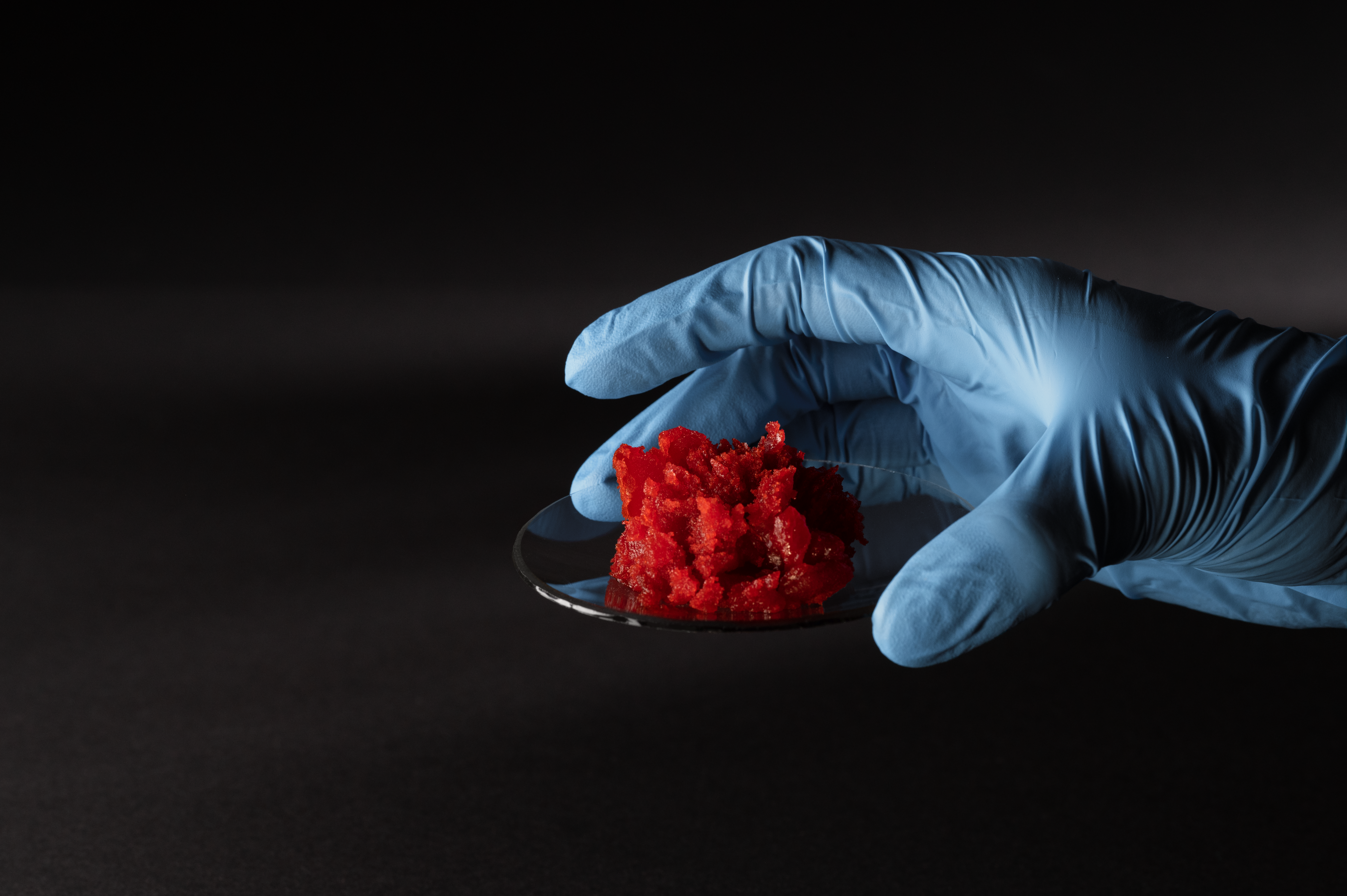Sawdust makes up a large part of manufacturing waste in Estonia. So what can we do with it? Nemailla Bonturi and Petri-Jaan Lahtvee, founders of the TalTech spin-off company ÄIO, found an answer to the question.

Bonturi, who comes from Brazil, and Lahtvee have their roots in biotechnology – a field that aims to use microbes to produce something valuable from various organic by-products. With the company ÄIO, they began to produce fats and oils for use in food from wood waste. The main objective is to reduce the ecological footprint of food production and to slow down global warming.
Why sawdust?
After working abroad, Petri-Jaan Lahtvee went on to develop the field of biotechnology at TalTech. While up to now, sugars used in food have been the main components in the production of this sector, Lahtvee has now given wood a chance. The reason is simple – you do not find large amounts of sugar in Estonian nature, but you do find wood and agricultural waste. As sawdust is the most voluminous type of production waste in Estonia, the researchers decided to use it wisely.
As the production of fats and oils has a major global impact on the environment, the idea of making a food-grade spread from sawdust came up. If the project proves successful, it could replace the use of palm and coconut oil and animal fats in food in the future.
People are lazy by nature
Lahtvee says that, by and large, people are very lazy by nature – for example, if they want to go to a warm country for a holiday, they board a plane. It is a good and fast solution, but most travellers do not think about the impact on the environment. But if someone likes meat, they will eat it. This is why alternatives must be developed that are easy and convenient for people to use, as well as being more environmentally friendly and healthier.
According to Lahtvee, the goal of biotechnologists in the food sector is to create healthier and higher-quality raw materials with a smaller impact on the environment. Of course, for people to want to consume these products, they have to taste good. This can change people’s eating habits as well as reduce global warming.
But what did all this mean for researchers? ‘Six years of sleepless nights, blood, sweat, and tears. If something goes wrong in the lab, you do it again. And again. It took a lot of perseverance,’ says Bonturi. Now, we can see the results, and Lahtvee and Bonturi are already attracting the first investments for ÄIO. ‘Quite a lot of companies are interested in our product,’ says Lahtvee.

More on biotechnology
The Food Technology and Engineering Biology Laboratory of the TalTech Department of Chemistry and Biotechnology focuses on global biological sustainability challenges, including the sustainable production of food and feed, as well as biochemicals and materials.
Researchers are developing new bio-based processes to convert a range of organic waste from the food and wood sector into value-added products.
Together with international and local partners, researchers are developing all value chains of the circular economy to ensure the sustainable production of value-added products with a minimum ecological footprint.
INFORMATION BOX
How did the name ÄIO come about?
Nemailla Bonturi from Brazil has been living in Estonia for six years and is very fond of Estonian folklore. This is where the idea of using a character from Estonian folklore in the company’s name came from, and by searching the Internet, they found Äio, the god of sleep and dreams.
Source: TalTech webpage
Read more about the study possibilities in Estonia.
Find YOUR study programme from our programme's page.
Read more news and blog posts:
